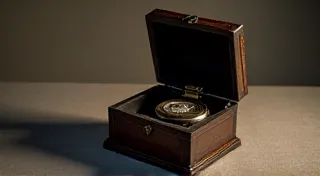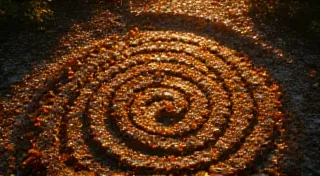The Postcard’s Diaspora: Tracing Migration Patterns Through Destination Views
There’s a particular quiet beauty held within a vintage postcard. It’s not just the faded colors or the slightly worn edges; it’s the echo of a moment, a connection to a life lived and a journey undertaken. To collect them is to hold history in your hands, to glimpse fleeting glimpses of eras gone by. But beyond the aesthetic appeal, postcards offer a fascinating window into the human story – especially when we consider how they illuminate patterns of migration and the enduring allure of distant lands.
My own fascination with vintage postcards began with my grandmother. She wasn't a dedicated collector in the formal sense, but her albums were overflowing with postcards collected from across Europe during her post-war travels. Holding those cards, feeling the thinness of the cardstock, smelling the faint, musty fragrance of decades past, transported me. They weren’t just images; they were whispers of adventure, of a generation seeking new beginnings and rediscovering a world scarred but hopeful.
The Golden Age of Travel & The Postcard’s Ascent
The late 19th and early 20th centuries witnessed a confluence of factors that made postcards incredibly popular. The invention of the chromolithographic printing process allowed for the mass production of color images, making destinations accessible to a wider audience. Simultaneously, the rise of railways and steamships dramatically reduced travel times and costs, fueling a burgeoning tourist industry. Postcards became the perfect souvenir, easily mailed to loved ones back home, providing visual proof of one’s travels and spreading the allure of faraway places. For many, the rise of the postcard was intertwined with the whispers of the rail and the unprecedented expansion of travel possibilities.
Think about it. For many, the postcard *was* the travel experience. The ability to send a tangible representation of a place, capturing its beauty and charm, was revolutionary. It offered a connection across oceans and continents, a piece of a memory shared with family and friends who might never have the chance to visit themselves. The postcards weren't just about *where* someone had been; they hinted at the hope and aspiration driving their journeys.
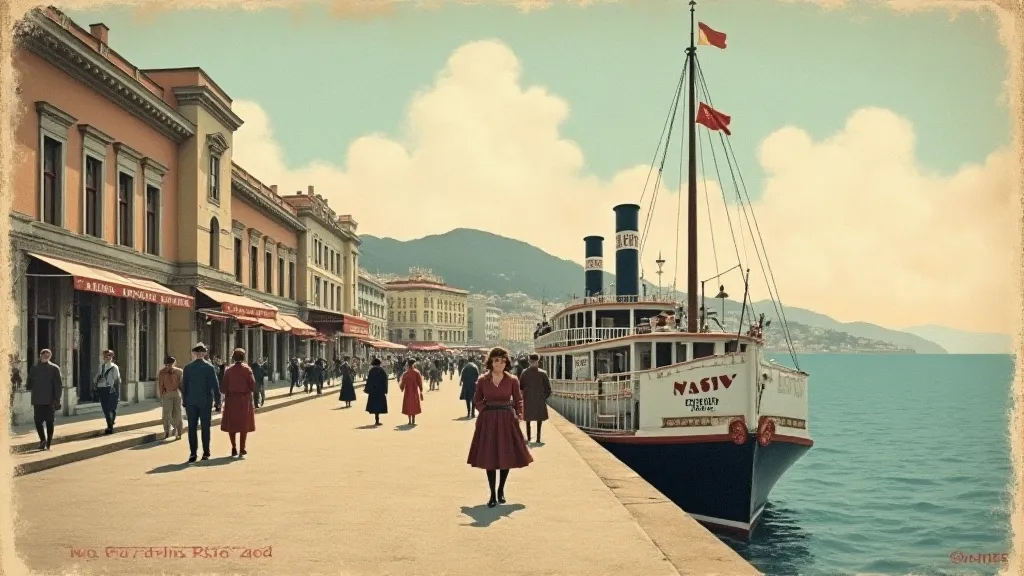
Tracing Journeys: The Diaspora Reflected in Destination Views
Analyzing collections of vintage postcards can reveal remarkable insights into historical migration patterns. Consider the sheer volume of postcards depicting Italian coastal towns sent to relatives in America during the late 1800s and early 1900s. These weren’t casual souvenirs; they were often poignant messages of hope and longing, sent by immigrants establishing new lives across the Atlantic. They showed loved ones that they were safe, that they were thriving, and that the promise of a better future was real.
Similarly, postcards featuring destinations like Buenos Aires, Argentina, are frequently found in collections belonging to descendants of German and Italian immigrants. The images themselves – the grand architecture, the burgeoning industry, the promise of opportunity – served as beacons, attracting successive waves of migrants eager to join those who had paved the way. Examining these postcards is almost like uncovering a thousand glimpses of an evolving world.
It's not just about the grand destinations, either. Even smaller towns and villages, often overlooked in modern travel guides, become significant when viewed through the lens of postcard collecting. The sheer number of postcards depicting a seemingly unremarkable mining town in Colorado, for instance, could indicate a significant influx of workers seeking employment during a particular boom period. These seemingly mundane scenes often hold the most compelling stories – tales of resilience, opportunity, and the hopes of a new beginning etched onto fragile pieces of cardstock.
The Craftsmanship & The Appeal of the Antique
Beyond the historical context, there’s a deep appreciation for the craftsmanship evident in vintage postcards. The intricate detail of the lithographic printing, the often-beautiful typography, the delicate artistry of hand-tinted images – these are qualities rarely found in modern mass-produced imagery. The cards themselves are often printed on thicker, more durable cardstock, a testament to the quality standards of the era.
Look closely at the hand-tinting. It’s often imperfect, with variations in color and shading that add a unique charm and character to each card. It’s a testament to the human touch, a departure from the clinical perfection of digital printing. This imperfection is part of the beauty; it speaks to the individual who created the image and the journey it represents. These imperfections offer a powerful reminder of an era when art wasn't about flawless reproduction but about capturing a feeling, a moment in time.
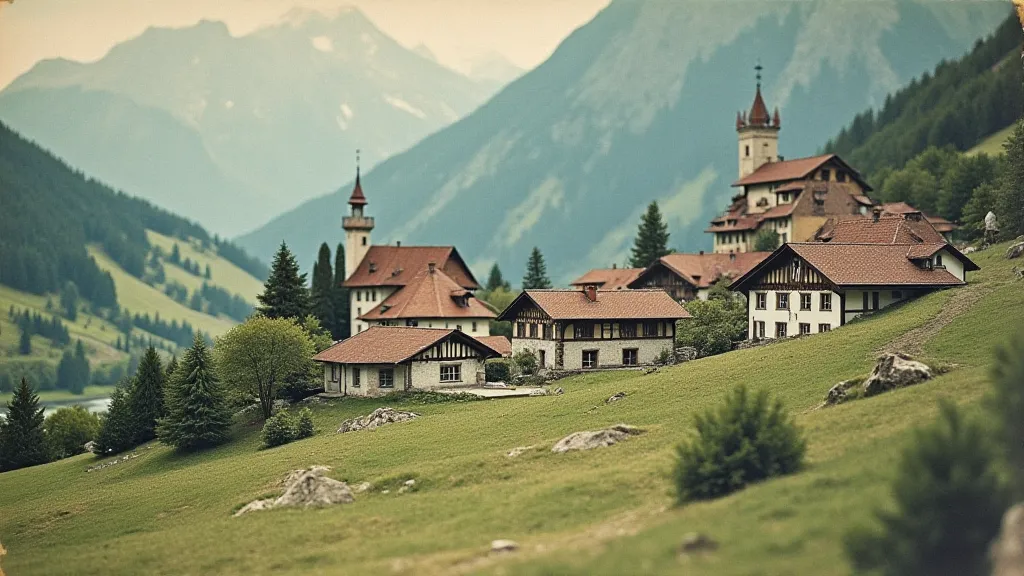
Restoration & Responsible Collecting
Many vintage postcards are fragile and have suffered from the ravages of time. Proper storage is crucial. Acid-free sleeves and albums are essential to prevent further deterioration. While restoration is possible, it should be approached with caution and respect for the card's historical integrity. Excessive cleaning or retouching can diminish its value and authenticity.
When acquiring vintage postcards, it’s important to be mindful of provenance and authenticity. Researching the publisher, the postmark (if any), and the style of printing can help to verify its age and origin. Supporting reputable dealers and auction houses can also ensure that you are acquiring genuine articles. The stories these cards tell are enhanced when their history is properly documented and respected.
The joy of collecting vintage postcards isn’t solely about accumulation; it’s about connection. It’s about piecing together fragments of the past, understanding the human stories behind the images, and appreciating the artistry and craftsmanship of a bygone era. It’s about holding a tangible link to those who came before us, who chased their dreams and shared their experiences through these small, rectangular windows to the world. It's also about realizing how these small cards offer echoes in sepia - portable memories of a time long past.
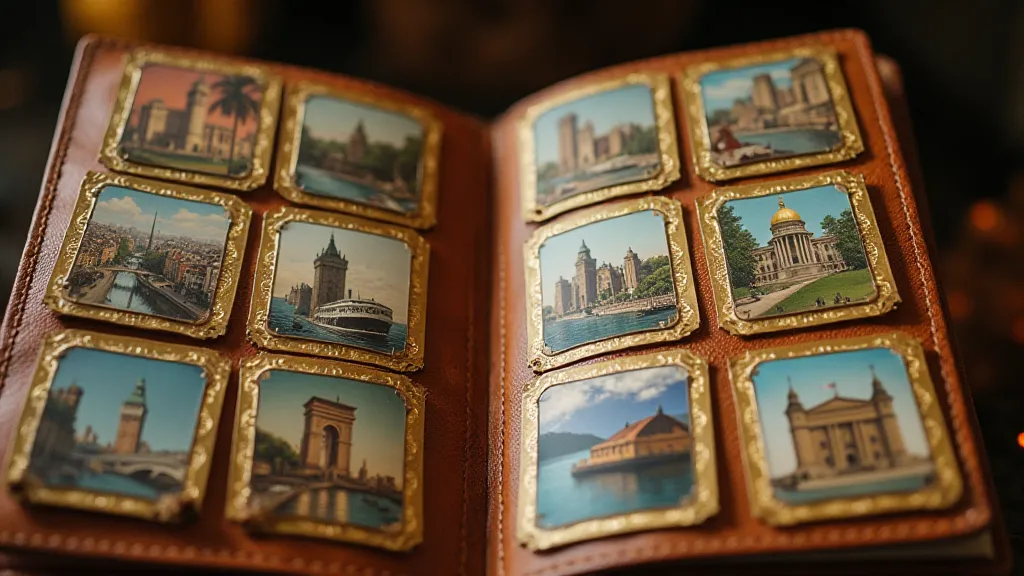
Beyond the Image: The Postmark's Story
Don’t overlook the postmark! Often disregarded, the postmark is a miniature history lesson in itself. It reveals the origin of the postcard, the postal route it traveled, and sometimes provides clues about the sender and recipient. A faded postmark from a small, rural town can be just as fascinating as a vibrant image of a major city.
Ultimately, the postcard’s diaspora speaks to the enduring human desire to connect, to explore, and to share experiences. These small pieces of paper offer a powerful reminder of our shared history and the enduring legacy of those who came before us. Collecting them is more than a hobby; it's a journey through time, a window into the human spirit.



